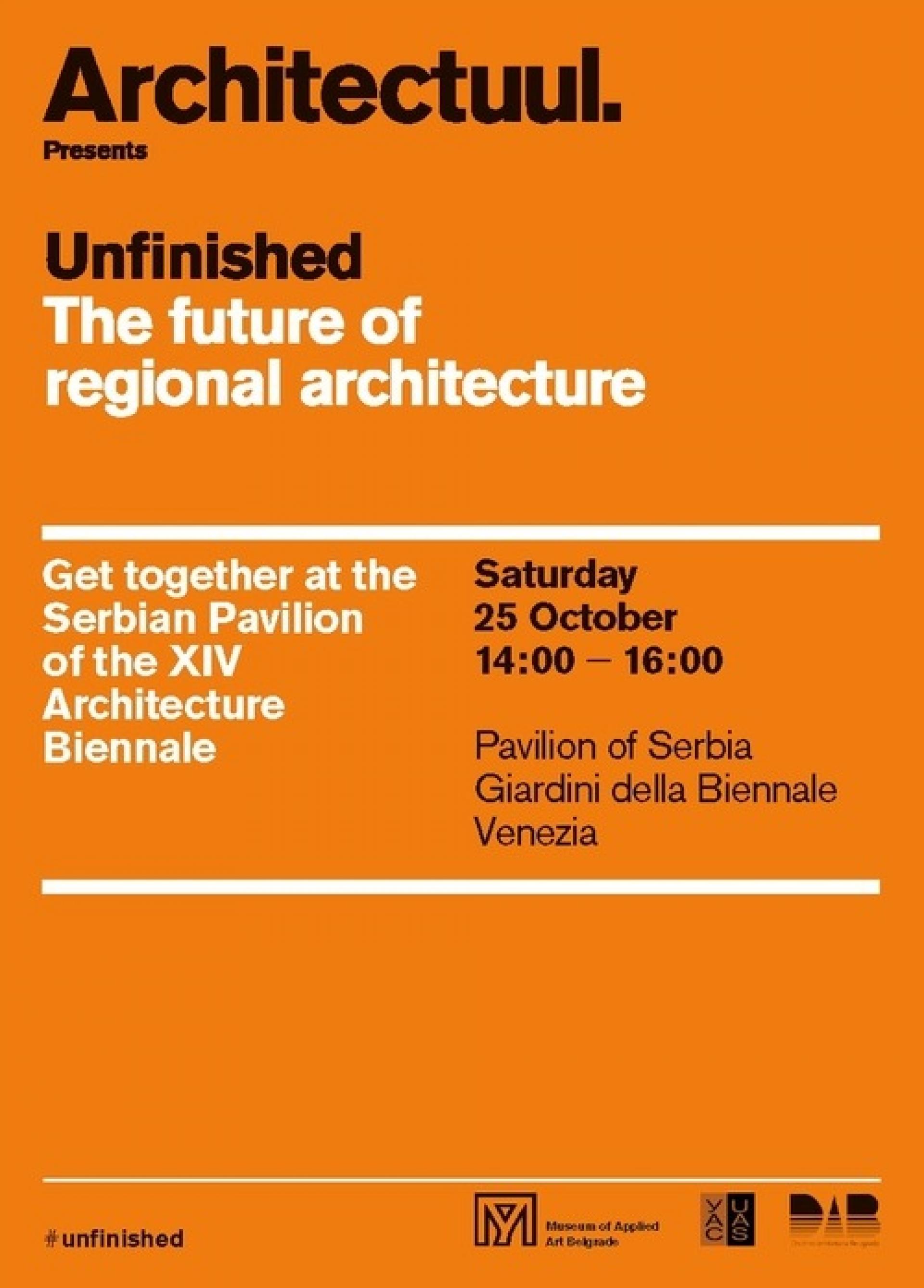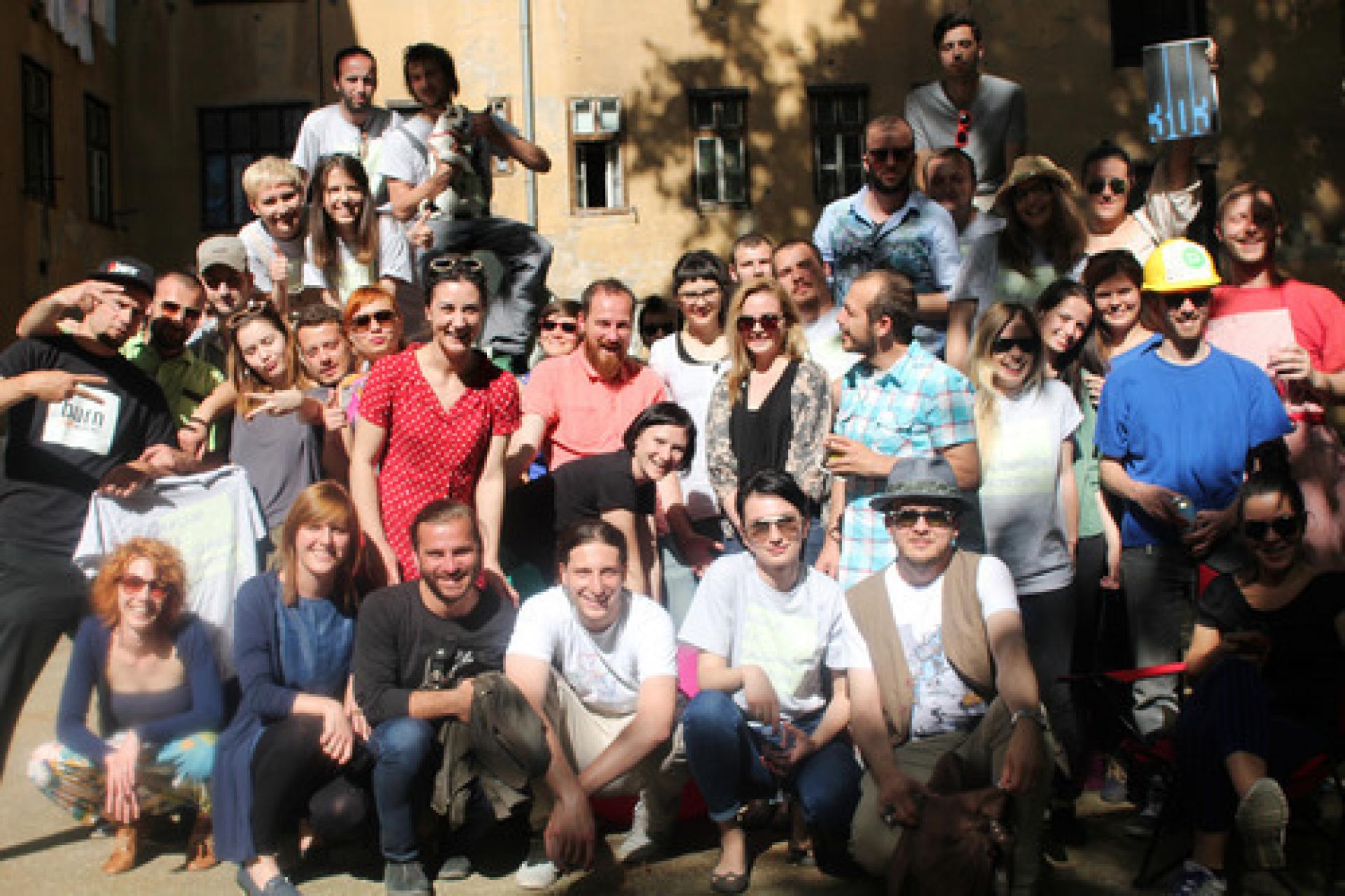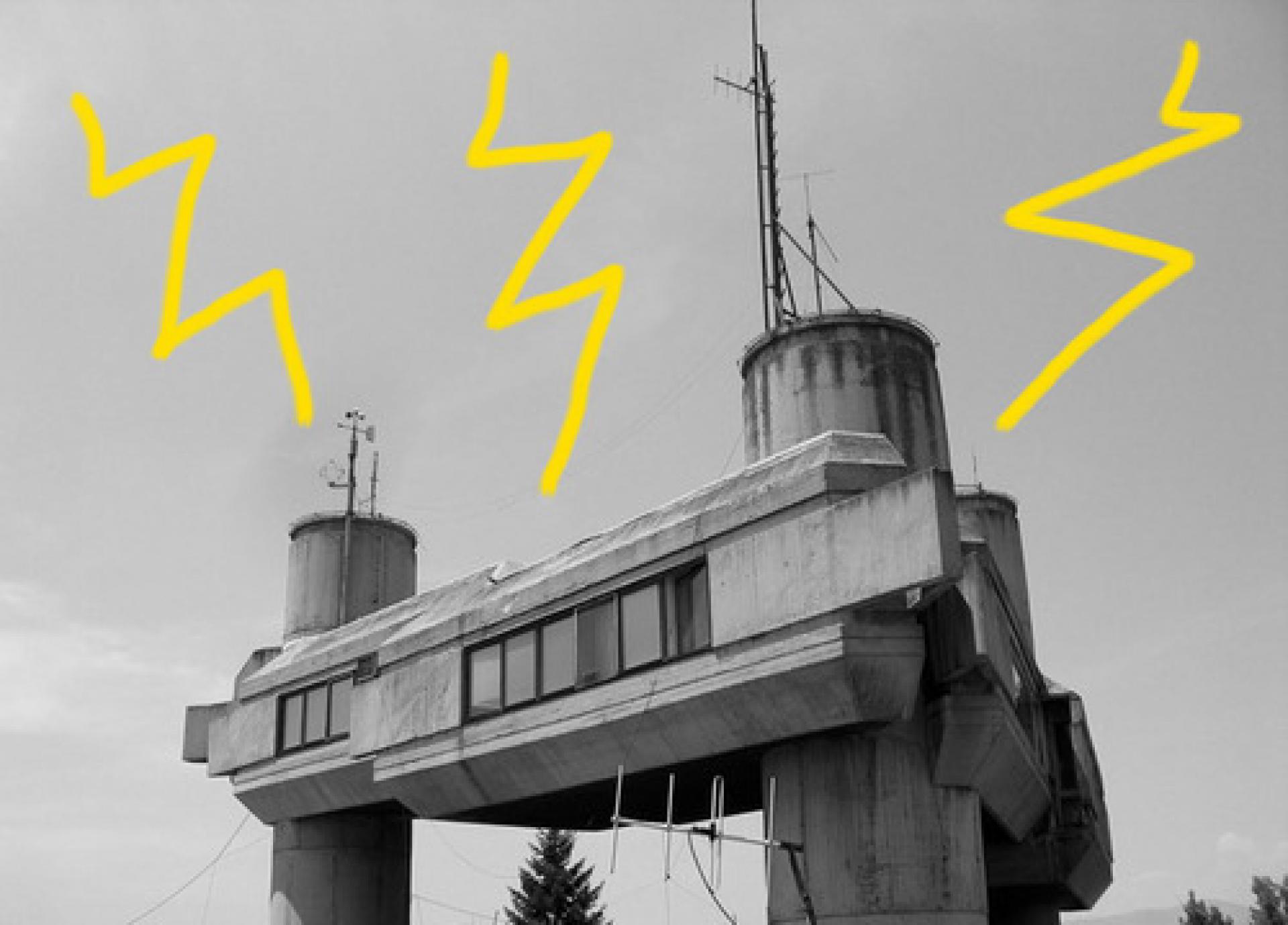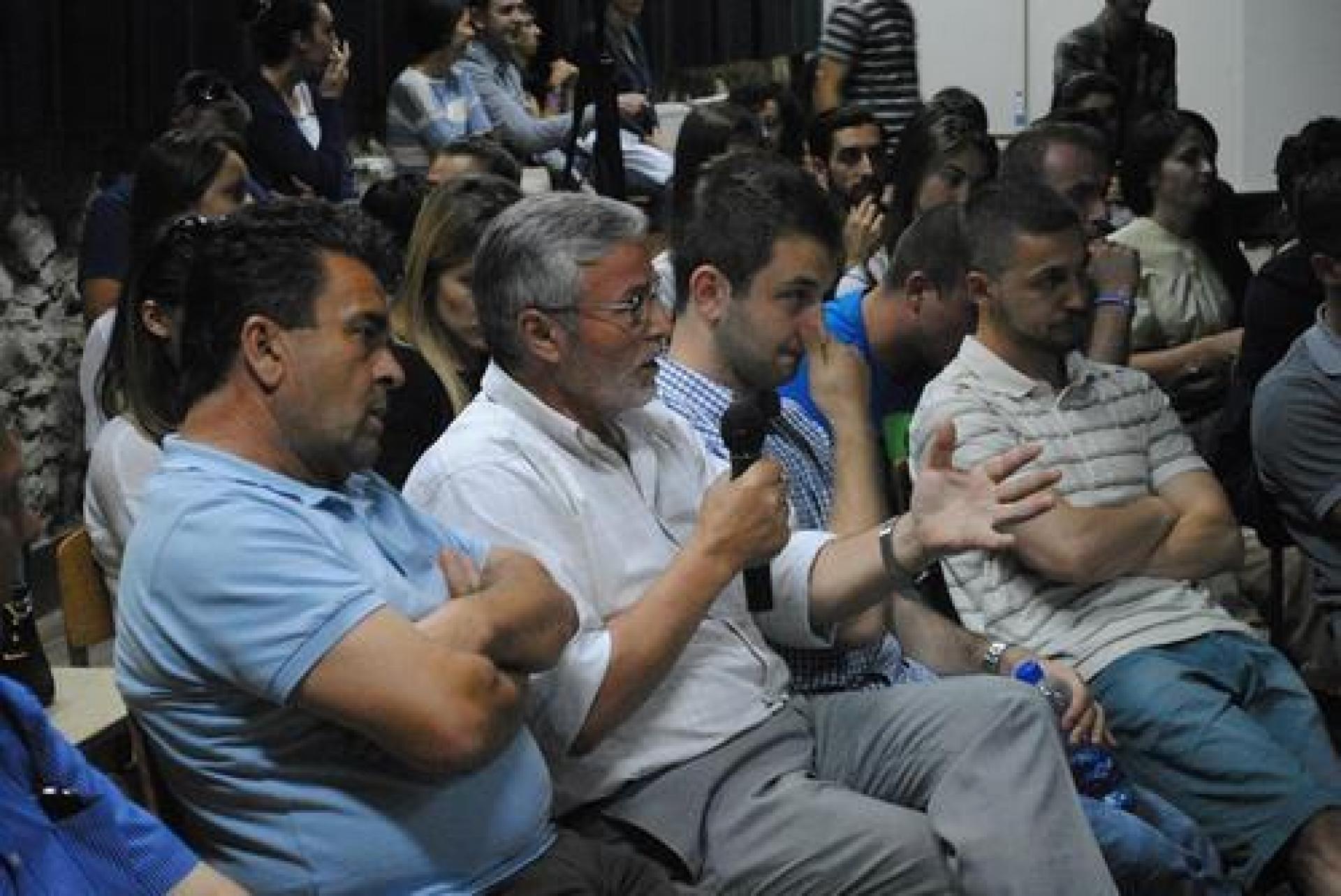Unfinished Continues At The Biennale In Venice
Our tour de force through Europe rediscovering regional architecture continues with a get-together at the Serbian Pavilion of the XIV Venice Biennale of Architecture on 25 October - time to take stock.
So far we have meet three generations of architects from Slovenia, the Czech Republic, Serbia, Austria, Slovakia, Macedonia, Bosnia and Herzegovina, Kosovo, Albania and Montenegro. Further meetings in Estonia, Portugal, Italy are up our sleeves.

Unfinished was conceived as a conversation about the legacy of architecture embedded in the local context. Since April of this year we travel through Europe to engage architects from different countries in public talks: uncovering forgotten architectural gems, discussing perceived failures and trying to trace the evolution of local architectural practice from the early 20th century to the present. To do this we have worked togehter with architecture institutions all over Europe.

During the Days of Architecture in Sarajevo we opened the discussion about the built environment in Bosnia and Herzegovina.
The first country of our tour was Slovenia where we met at the Museum of Architecture and Design in Ljubljana. Slovenia saw many architectural changes in the 1990s the period of the so called ‘Six-Pack Architects’, which introduced concepts from international schools like the Berlage or AA where a whole generation of Slovenian architects had studied. The web portal Trajekt made architecture accessible to a younger scene. At the same time the educational system in Ljubljana was still under the strong influence of its godfather, the turn-of-the-twentieth-century Slovenian architect Jože Plečnik who, together with his disciples, was responsible for building most of modern Ljubljana leading to an interesting but largely unresolved clash of ideas.

Slovenia Unfinished at the Museum of Architecture and Design in Ljubljana.
Our next stop was the Czech Republic where the perceived generation gap between architects who practised mostly during the communist times and later generations resulted in the severing of older roots.
While exploring the Balkans, first in Belgrade and then in Skopje, Sarajevo and finally in Prishtina the tension between the rising commercialization of space and the heritage of Socialist modernism and the creation of small-scale alternative urban practices becomes apparent. While Serbia’s architectural past draws on the strong influence of Italian rationalism, the golden era of Macedonian architecture harks back to the time after the severe earthquake of 1963. The reconstruction plan by Kenzo Tange after the event and the fruitful discussions which accompanied the re-building of the city are erased today by a construction practice where architecture plays a very limited or no role at all.

The three break points of Macedonian architecture as discussed at Unfinished Macedonaia at the XVII Architecture Biennial.
In Bosnia and Herzegovina, the book 'Architecture of Bosnia and the Way to Modernity’ from 1957 by the architects Grabrijan and Neidhart and a foreword by Le Corbusier was a trailblazer for the modernist architectural discourse. The authors stress the twofold influence of the region – eastern and western and thus laid the groundwork for the urban plan of Sarajevo which was prepared in the 1960s. However, in Bosnia and Herzegovina its has always been the political elites which created the architectural context, and today improvisations are the substitute for any common design approach.

In Prishtina, Unfinished was organized in conjunction with the Pristina Architecture Week.
In collaboration with the architecture platform Wonderland we took a fresh look at Austria and explored a new theme: future proof. Ecology, which only played a subordinate role in other countries, came to the fore of the discussions. During the last fifteen years a shift towards a sustainable approach beyond common certificates and an inward looking 'green’ industry solution has developed In Austria. Top-down master planning has not fulfilled the promise of a stable and equitable society. The picture of the omniscient architect has been replaced by an eagerness to learn from practices of “non-architects” and by the will to engage in social and ecological matters in order to open and enliven the field.
All these reflections form part of the puzzle which we will try to put together at the Biennale with the help of our different contributors and participating architects. In the run up to Venice, we will explore Montenegro and Albania, but Venice will be the first opportunity to confront all these different local viewpoints. We can’t wait!